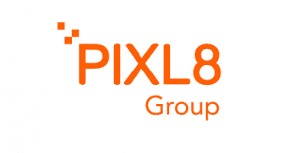Jonathan McLellan, Digital Consultant
Conversion Rate Optimisation, or CRO, is the acronym on everyone’s lips right now. As a membership marketer, you need to find the value in it or risk it being deemed just another fad.
CRO can seem complicated, so we’ve broken down the basics into 5 steps. Want to know the secret behind persuasion, income generation, and conversions? Read on…
Step One: Define your conversions
If you were running a small ecommerce site, it would be simple to track conversions – logically, they’d be purchases. If over the course of one month you got 100 web visits, and 3 purchases, you’d have a nice round percentage as your conversion rate: 3%.
Tracking conversions as a membership marketer is usually more complicated – people can take weeks, or even months, to convert.
Therefore, it is useful to define multiple, smaller desired actions instead of only reporting on the “big-hitters”, like membership renewals or paid subscriptions. This will help build up a more detailed understanding of user journeys on your website.
Step Two: Split your conversion tracking up
In membership, users don’t tend to convert straight away. You need a way to track users who are likely to convert (so you can better segment and target your marketing), as well as a way to determine which actions matter most to you.
We suggest splitting conversions into “macro-” and “micro-” conversions.
Macro conversions are those ultimate wins we mentioned earlier; subscription renewals, paid membership purchases, or even attending a paid-for members-only event. Because these can be cyclical, campaign-driven or sporadic actions, they don’t make up great datasets.
Additionally monitoring a set of micro conversions, i.e. resource downloads or other types of regular engagement, complements your dataset of macro conversions to allow for a broader picture.
Step Three: Get familiar with “Know, Feel, Do”
The Pixl8 “Know, Feel, Do” model forms the basis of all persuasive communication. Familiarising yourself with it (and applying it masterfully) will add real resonance to your CRO related marketing activities.
Put simply, you should ask yourself these three questions to determine how well your page converts:
- Know – what do you want users to know?
- Feel – why should they care about this information?
- Do – what do you want them to do?
Step Four: Research, test, and test again
The most important (and often underlooked) part of CRO is the research and testing stage.
It helps you to understand what works and what doesn’t, and to set the right parameters for success. There are a multitude of different methodologies and tools to support your research efforts – you just need to find the one that’s right for your individual setup.
If you skip this step, you could be missing out on valuable broad and contextual insights that could make all the difference to your membership. Think about where people are on their membership journey, consider their motivations and respond appropriately to drive conversions.
Step Five: Don’t forget the human element
Doing all of the above, and still not seeing the results you want? Don’t worry. Often, people make unpredictable choices not based on logic (or our carefully considered KPIs), but on emotion and impulse.
CRO isn’t an exact science, so don’t shy away from trying new things. With “quick wins” sometimes making all the difference, you should remember that learning by doing can be an awarding strategy.
Want to hear more?
Sign up to Pixl8’s monthly newsletter filled with practical tips and tricks you won’t want to miss.
Pixl8 is the go-to agency for membership organisations who are seeking digital solutions that go the extra mile.










Leave A Comment